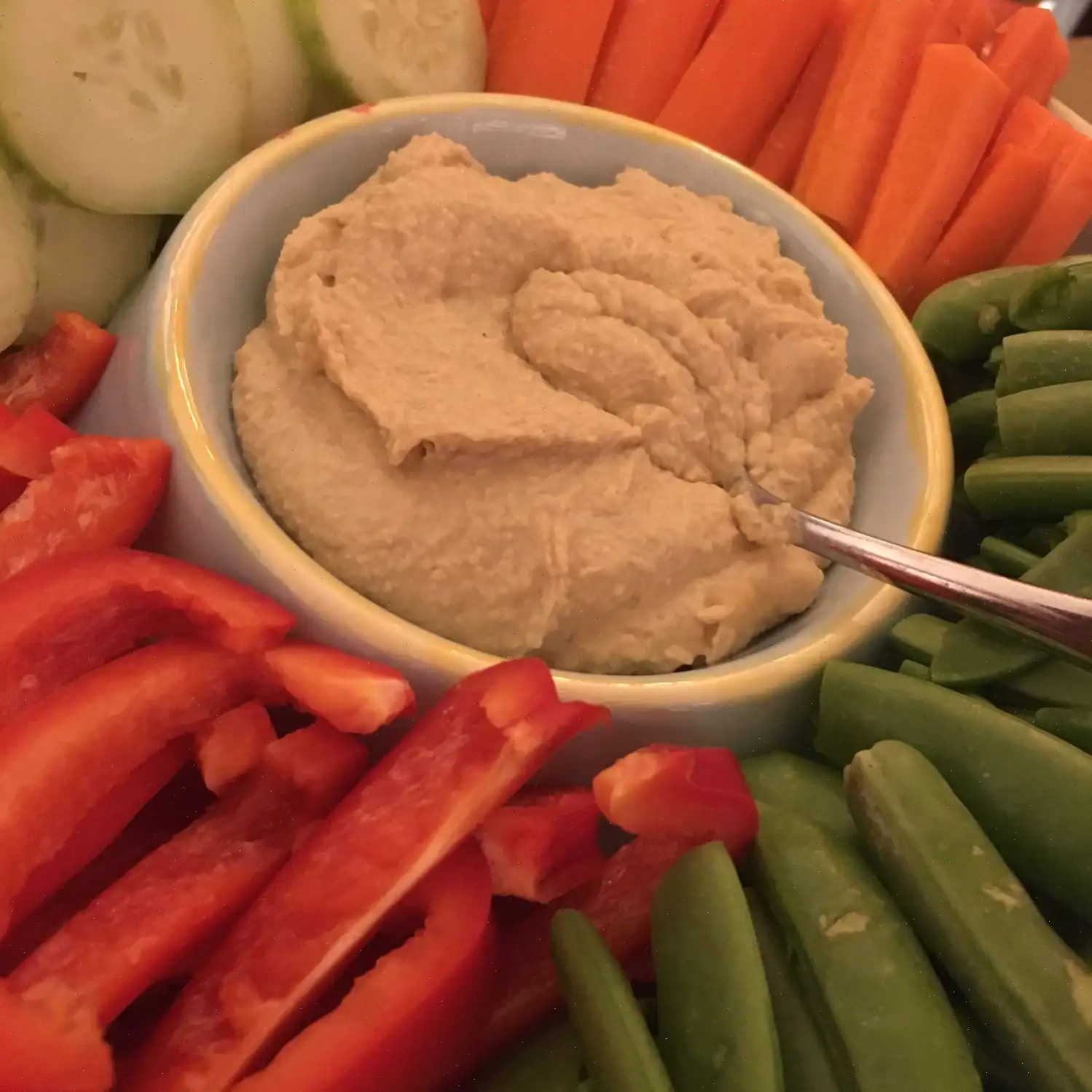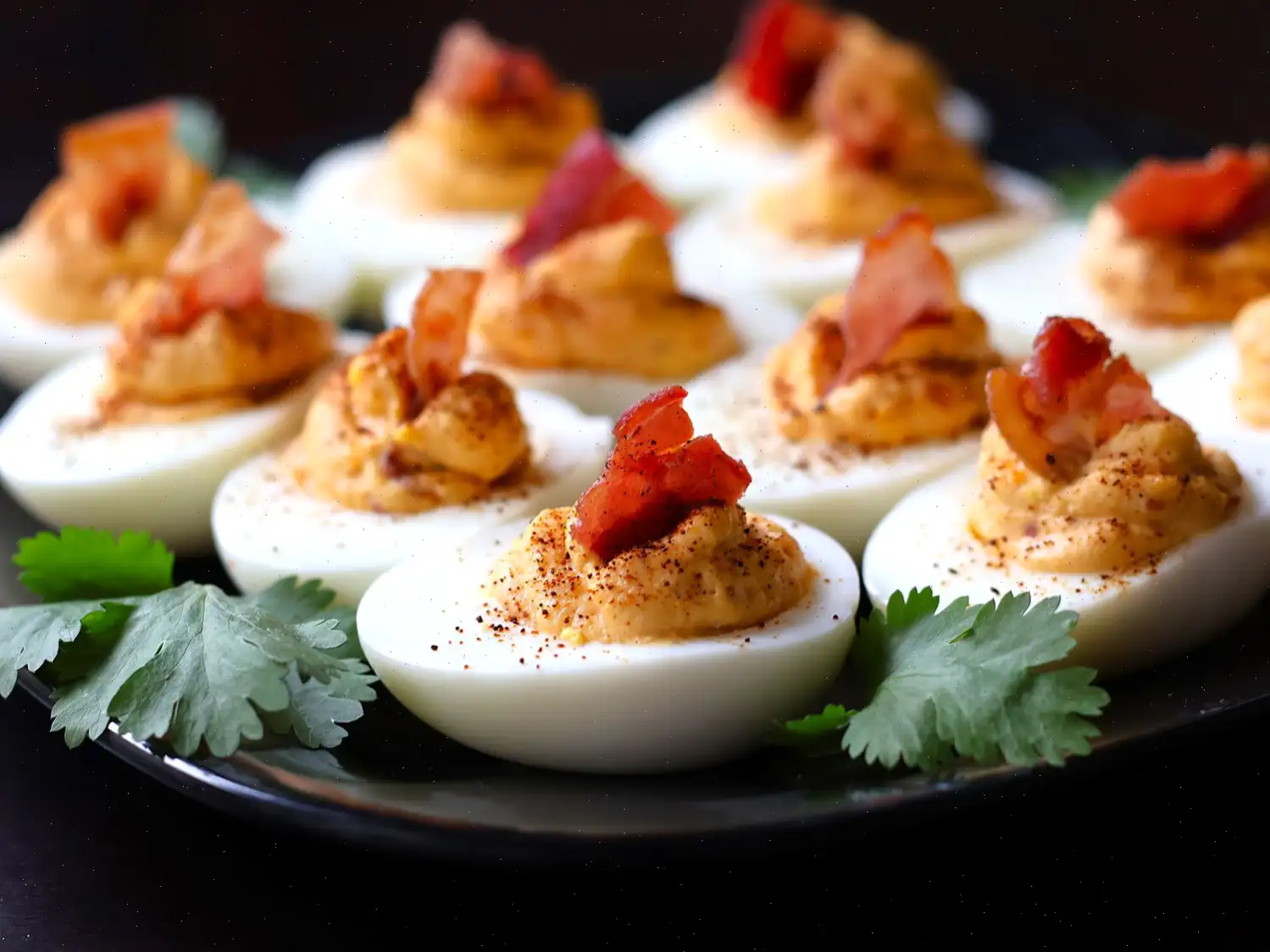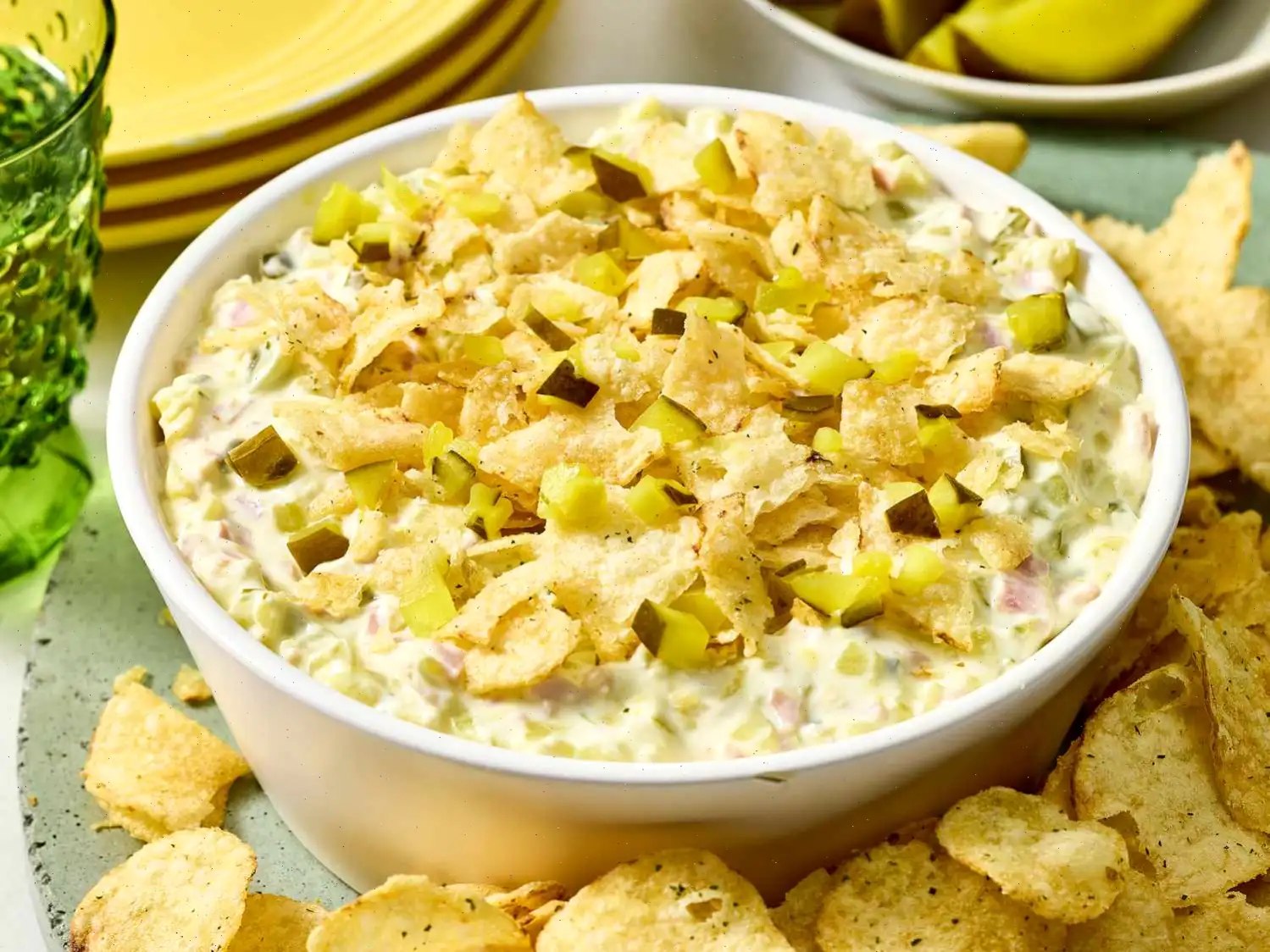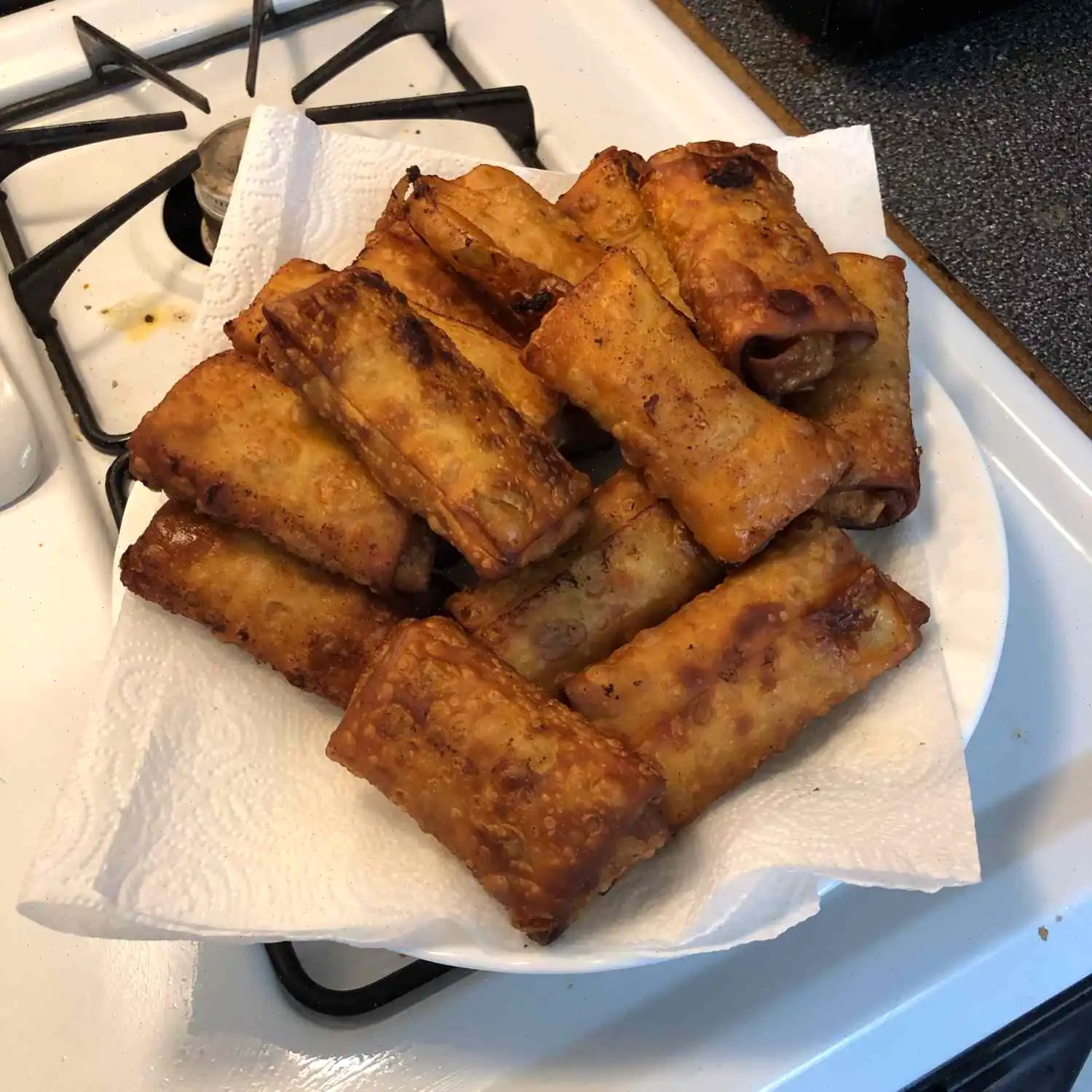
Hummus from Scratch Recipe
Ingredients
- cup dry garbanzo beans
- cup dried soybeans
- 1 bay leaf
- 1 onion, quartered
- 1 cup vegetable broth
- 3 cups water
- 2 cloves garlic, crushed
- 1 lemon, juiced
- 2 tablespoons soy sauce
- Black pepper to taste
- cup tahini
- cup chopped fresh parsley
Directions
Step 1: Rinse the garbanzo beans and soybeans thoroughly. Place them in a pressure cooker, along with the bay leaf and quartered onion.
Step 2: Add the vegetable broth and enough water to cover the beans by about 1 inch. (Be sure to follow your pressure cooker's minimum liquid requirements.)
Step 3: Seal the lid of the pressure cooker and bring the pressure up to high. Once the pressure is high, reduce the heat to low and cook for 1 hour. Maintain high pressure throughout the cooking time.
Step 4: After 1 hour, allow the pressure to drop naturally. Once safe, open the pressure cooker and drain the beans, reserving the cooking liquid.
Step 5: Transfer the cooked beans to a food processor. Add the crushed garlic, lemon juice, soy sauce, black pepper, and tahini.
Step 6: Process until the mixture becomes smooth. If you'd like a thinner consistency, add some of the reserved cooking liquid.
Step 7: Scoop the hummus into a bowl and stir in the chopped parsley. Taste and adjust seasoning if necessary.
Cook's Notes
Feel free to get creative with your hummus! You can try adding roasted red peppers, sundried tomatoes, Parmesan cheese, or fresh scallions for a unique twist.
If you dont have a pressure cooker, you can prepare the hummus on the stovetop. Start by soaking the beans overnight. Then, bring the beans, onion, and bay leaf to a boil. Reduce the heat and simmer covered for about 2 hours, or until the beans are very tender. Continue with the recipe as directed.
Nutrition Facts (per serving)
| Nutrient | Amount | % Daily Value |
|---|---|---|
| Calories | 161 | |
| Total Fat | 6g | 8% |
| Saturated Fat | 1g | 5% |
| Sodium | 302mg | 13% |
| Total Carbohydrate | 20g | 7% |
| Dietary Fiber | 6g | 21% |
| Total Sugars | 4g | |
| Protein | 8g | 16% |
| Vitamin C | 17mg | 19% |
| Calcium | 93mg | 7% |
| Iron | 3mg | 18% |
| Potassium | 386mg | 8% |
Note: The nutrition facts are based on a 2,000 calorie diet. Your daily values may vary depending on your specific needs.
Hummus, a creamy, savory dip made from chickpeas, tahini, lemon, and garlic, is a beloved dish that transcends cultures and borders. Its a cornerstone of Middle Eastern and Mediterranean cuisine, adored for its simplicity and versatility. But where did hummus originate, and what makes it stand out among other dips? In this article, we explore the history, regional variations, and fascinating facts about hummus, along with its unique characteristics compared to similar dishes.
History and Origins
The history of hummus is as rich and complex as its flavor profile. While its exact origins are contested, many believe hummus originated in the Levant, specifically in modern-day Lebanon, Syria, and Palestine. Its presence can be traced back to medieval Arab cookbooks, with variations of the recipe appearing in texts dating back to the 13th century. The word "hummus" itself comes from the Arabic word for chickpeas ("hummus"), which is the key ingredient in this dish.
Hummus spread throughout the Middle East over time, becoming a staple in the diets of many countries. Its popularity surged globally in the 20th century, particularly as vegetarian and plant-based diets became more mainstream. Today, hummus is enjoyed all over the world, often served as an appetizer, snack, or side dish, and it is a symbol of cultural pride in many Middle Eastern countries.
Regional Variations
While hummus is widely enjoyed across the Middle East, it is not without its regional variations. In Lebanon and Syria, for example, hummus is typically served with olive oil, pine nuts, and a sprinkle of paprika, while in Egypt, the dip may include a touch of cumin or tahini. In Israel, hummus is often paired with warm pita bread and can be found in numerous variations, from classic to versions with roasted vegetables or spicy chili.
In addition, some regional differences arise from the texture and consistency of the hummus. In countries like Lebanon, hummus tends to be smoother, while in Palestine, it can have a slightly thicker, chunkier consistency. The key ingredientschickpeas, tahini, garlic, lemon, and olive oilare consistent across the board, but each country has its own unique way of serving and seasoning the dip.
Distinctive Qualities of Hummus
Hummus stands out from other similar dips, such as baba ghanoush, for its primary ingredient: chickpeas. Baba ghanoush is made from roasted eggplant, which gives it a smokier flavor, while hummuss creamy, nutty profile comes from the combination of tahini and chickpeas. The texture of hummus is generally smoother, whereas baba ghanoush has a more rustic consistency. Additionally, hummus is often served as a cold dip, while baba ghanoush can be served warm or cold.
Another distinguishing feature of hummus is its versatility. It can be adapted to suit various dietary preferences. For example, you can make hummus spicy by adding chili flakes or roasted peppers, or you can create a sweeter version by blending it with roasted carrots or beets. This adaptability makes hummus a go-to snack for people with different tastes and dietary needs.
Where is Hummus Typically Served?
Hummus is a popular dish in many countries, particularly in the Middle East, North Africa, and the Mediterranean. It is commonly served as part of a mezze platter, where it is accompanied by a variety of small appetizers such as tabbouleh, falafel, and pita bread. In some regions, hummus is also enjoyed as a topping for falafel sandwiches or shawarma wraps.
Outside the Middle East, hummus has gained immense popularity in the United States, Europe, and beyond, often found in supermarkets as a ready-made dip. However, homemade hummus, made from scratch, is still revered for its fresh flavor and superior texture. In the U.S., it is commonly served as a healthy snack or appetizer at parties and gatherings, paired with fresh vegetables like cucumbers, carrots, and bell peppers.
Interesting Facts About Hummus
- Hummus and Health: Rich in protein, fiber, and healthy fats, hummus is not only delicious but also nutritious. It's a popular choice among vegetarians, vegans, and health-conscious individuals. A serving of hummus is known to provide a good source of iron, calcium, and potassium.
- The Hummus War: In 2008, Lebanon and Israel became involved in a Hummus War when Lebanon claimed to have created the world's largest serving of hummus. The dish weighed an astonishing 10.5 tons, breaking the Guinness World Record. However, this battle for hummus supremacy highlights how important this dish is to both nations' identities.
- Hummus as a Cultural Symbol: For many Middle Eastern countries, hummus is not just foodit is an important symbol of cultural pride and shared heritage. In Lebanon, Syria, and Palestine, the dish is a common subject of national debate, with each country claiming the authentic version.
Conclusion
Hummus is more than just a dipit's a culinary bridge between cultures, a rich part of history, and a symbol of Middle Eastern hospitality. From its disputed origins to its global appeal, hummus continues to bring people together over shared meals and flavors. Whether you enjoy it as a simple dip with pita or as part of an elaborate mezze platter, hummus from scratch offers a delicious, healthy option for any occasion.
You can listen to this recipe in AI audio format. Simply click the play button below to listen to the content in a format that suits you best. It’s a great way to absorb information on the go!
FAQ about Hummus from Scratch Recipe
Comments
Samantha Miller
09/08/2023 12:37:23 PM
There's nothing quite like homemade!
Scott Anderson
03/08/2024 08:15:25 AM
I absolutely adore the freshly cooked beans in this recipe. I prefer to skip the onions for a more traditional hummus taste. I also use a bit less tahini, but that's just a personal preference. A pinch of cayenne gives it a nice kick. I found that soy sauce didn't quite fit, so I left that out as well.
Alexander Scott
12/12/2023 12:22:04 PM
I decided to give it a try out of curiosity, but unfortunately, it fell flat. Despite using high-quality ingredients, this recipe calls for three times the amount of ingredients usually required, resulting in a lackluster outcome.
Jessica Wright
10/02/2024 08:35:26 PM
I have mixed feelings about this recipe. I enjoyed the cooked beans, they were perfectly done with a great cook time and method. I only used half an onion instead of a large sweet onion, and the beans turned out perfectly cooked. I even liked them just as they were straight out of the pot, they would be great in a soup or on a salad. I had never tasted freshly cooked chickpeas before, and they made a huge difference. However, I didn't like the hummus at all. The tahini flavor was too strong for my liking. Perhaps some brands have a milder taste, but I found it overpowering. I could also taste the onions, which left a boiled aftertaste. The hummus was also too thick for my preference. Now I have 3 cups that no one in my family wants to eat. In hindsight, I wish I had only made a small portion of the hummus. When I tried to blend it in my high-quality mixer, it seemed like it was struggling, and I even smelled a strange odor. Although this recipe didn't turn out as I had hoped, at least I learned how to cook beans in my pressure cooker. My rating is based on the hummus alone. If I were to make it again, I would only make half the recipe to adjust the flavors and use the best quality tahini available.








